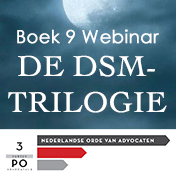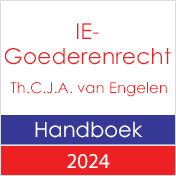Verwarringsgevaar tussen woordmerken "BULLDOG" en "RED BULL" voor o.a. frisdrank
06-03-2015 Print this page Gemeenschapsmerk – Beroep ingesteld door de houder van de nationale en internationale woordmerken „BULL” en „RED BULL” voor waren van de klassen 32 en 33, en strekkende tot vernietiging van beslissing R 107/2012 2 van de tweede kamer van beroep van het BHIM houdende vernietiging van de beslissing van de oppositieafdeling waarbij de inschrijving van het woordmerk „BULLDOG” voor waren van de klassen 32 en 33 in het kader van verzoeksters oppositie is geweigerd.
Gemeenschapsmerk – Beroep ingesteld door de houder van de nationale en internationale woordmerken „BULL” en „RED BULL” voor waren van de klassen 32 en 33, en strekkende tot vernietiging van beslissing R 107/2012 2 van de tweede kamer van beroep van het BHIM houdende vernietiging van de beslissing van de oppositieafdeling waarbij de inschrijving van het woordmerk „BULLDOG” voor waren van de klassen 32 en 33 in het kader van verzoeksters oppositie is geweigerd.
Het beroep wordt gedeeltelijk toegewezen en voor het overige verworpen; de bestreden beslissing wordt vernietigd. De tekens stemmen volgens het GEU visueel en fonetisch gemiddeld overeen. Het BHIM heeft onterecht geoordeeld dat de tekens conceptueel verschillend zijn, aangezien er een lage mate van conceptuele overeenstemming is tussen de tekens. Daarnaast heeft het BHIM onterecht geoordeeld dat er geen sprake is van verwarringsgevaar tussen het aangevraagde woordmerk “BULLDOG” en de oudere woordmerken “BULL” en “RED BULL.” Het BHIM heeft bij haar beoordeling geen rekening gehouden met het feit dat de betrokken waren (o.a. frisdranken) identiek zijn.
50 However, as Red Bull rightly argues, in the present case, contrary to what the Board of Appeal stated, those signs are not devoid of a certain conceptual similarity (see, to that effect, judgment of 16 May 2013 in Nath Kalsi v OHIM — American Clothing Associates (RIDGE WOOD), T‑80/11, EU:T:2013:251, paragraphs 52, 53 and 56). Admittedly, the Court cannot accept Red Bull’s argument that the English-speaking part of the relevant public will associate the bulldog and the bull due to the fact that, originally, the first was trained to fight the second, the practice of bull-baiting being little known beyond England. However, both the bull, depicted by the earlier word marks, and the bulldog, described by the mark applied for, convey the image of animals from which a concentrated force emanates, a great muscular force often expressing itself aggressively towards their fellow creatures or human beings, especially when that power is on display in combat or at bullfights
60 It should first be noted that the Board of Appeal failed to take into account, in the assessment of the likelihood of confusion, the fact that the products at issue were completely identical. Given, first, how important the fact is that they are identical and, second, the conclusion, reached in paragraph 54 above of the overall resemblance of the signs at issue, it must be held that the likelihood of confusion between the marks at issue has been proved.
Lees het arrest hier.



























































